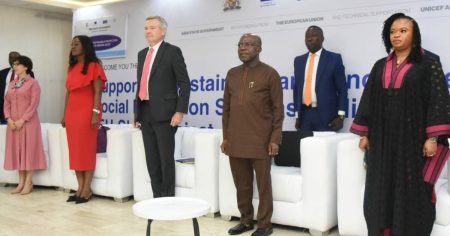Nigeria’s Cotton, Textile, and Garment (CTG) sector stands at a critical juncture, poised for revitalization and poised to reclaim its former glory. The Nigerian government, through the Ministry of Industry, Trade and Investment, has recognized the immense potential of the CTG sector and has publicly affirmed its commitment to fostering its growth. This commitment is driven by the urgent need to reduce the nation’s heavy reliance on imported clothing, a dependence that drains billions of dollars from the economy annually. The government aims to create a supportive policy environment that not only encourages local production but also stimulates job creation and boosts local manufacturing capabilities, thus contributing significantly to overall economic growth. The government’s vision is to localize up to $4 billion currently spent on textile imports, transforming this expenditure into a catalyst for domestic economic expansion.
Recognizing the need for collaborative action, the Ministry of Industry, Trade and Investment recently convened a high-level stakeholder engagement in Abuja. This strategic gathering, aptly themed “Co-Creating Solutions to Grow Nigeria’s CTG Industry”, brought together key players from across the CTG value chain. This platform facilitated open dialogue and collaborative brainstorming aimed at charting a sustainable path forward for the industry. The meeting served as a forum for industry experts, businesses, and government representatives to share insights, identify challenges, and formulate practical solutions to revitalize the sector. Participants highlighted the alarming annual expenditure of $4 billion on clothing imports, emphasizing the unsustainable nature of this reliance and advocating for prioritization of local production.
A key takeaway from the stakeholder engagement was the strong consensus on the pivotal role of garment manufacturing in driving the entire CTG value chain. Industry leaders, including Adenike Ogunlesi, the president of the Garment and Accessories Manufacturers Association of Nigeria, passionately advocated for garment manufacturing to be placed at the forefront of Nigeria’s industrial revival strategy. Ogunlesi argued that garment manufacturing serves as the engine of demand for the entire CTG chain, creating a ripple effect that stimulates upstream activities like textile production and cotton farming. She underscored the potential of garment manufacturing to create a significant number of jobs, generate substantial foreign exchange earnings, and elevate the global recognition of made-in-Nigeria products. This focus on garments as the driver of the value chain offers a strategic framework for revitalizing the entire sector.
The government’s commitment to revitalizing the CTG sector is not merely rhetorical. John Enoh, the Minister of State for Industry, Trade and Investment, has articulated a range of concrete initiatives aimed at supporting the industry’s growth. One such initiative involves launching a national campaign to promote the consumption of locally made garments and goods across all government ministries, departments, and agencies. Enoh cited the successful example of Ogun State, where over 70,000 public sector workers are mandated to wear Nigerian-made attire weekly. This strategy aims to create a consistent and guaranteed market for local producers, providing a stable foundation for their growth. The government also plans to facilitate access to finance and machinery for garment and textile businesses through collaborations with institutions like the Bank of Industry, addressing a significant challenge faced by many businesses in the sector.
Beyond policy pronouncements, the Minister of State has also demonstrated a personal commitment to supporting the CTG sector. He pledged to exclusively use a Nigerian-assembled vehicle once the national campaign for local products commences, symbolizing his belief in leading by example and promoting the consumption of made-in-Nigeria products. Enoh’s approach underscores the importance of government officials actively demonstrating their commitment to the policies they advocate, inspiring public trust and encouraging wider adoption. Furthermore, he drew inspiration from successful models in other countries, such as Bangladesh, Myanmar, and Kenya, highlighting how these nations initially focused on developing robust garment export markets, which subsequently justified investments in upstream activities like textile production and cotton farming.
The revitalization of Nigeria’s CTG sector requires a concerted and coordinated effort. The Minister of State emphasized the need for unity and reduced sectoral fragmentation to achieve significant progress. He called for a renewed sense of urgency, stressing the importance of moving from policy formulation to decisive execution. This call to action recognizes that past interventions, while well-intentioned, have often been fragmented and lacked the necessary coordination. Enoh’s emphasis on unity and urgency underscores the collective responsibility of all stakeholders, including government, industry players, and financial institutions, to work collaboratively to achieve the shared goal of a thriving CTG sector. The historical context further emphasizes the potential for revival, recalling Nigeria’s thriving textile industry from the 1950s to the 1980s, when over 180 textile mills operated at significant capacity and employed over half a million people. This historical precedent serves as both a reminder of past successes and a source of inspiration for the future.














